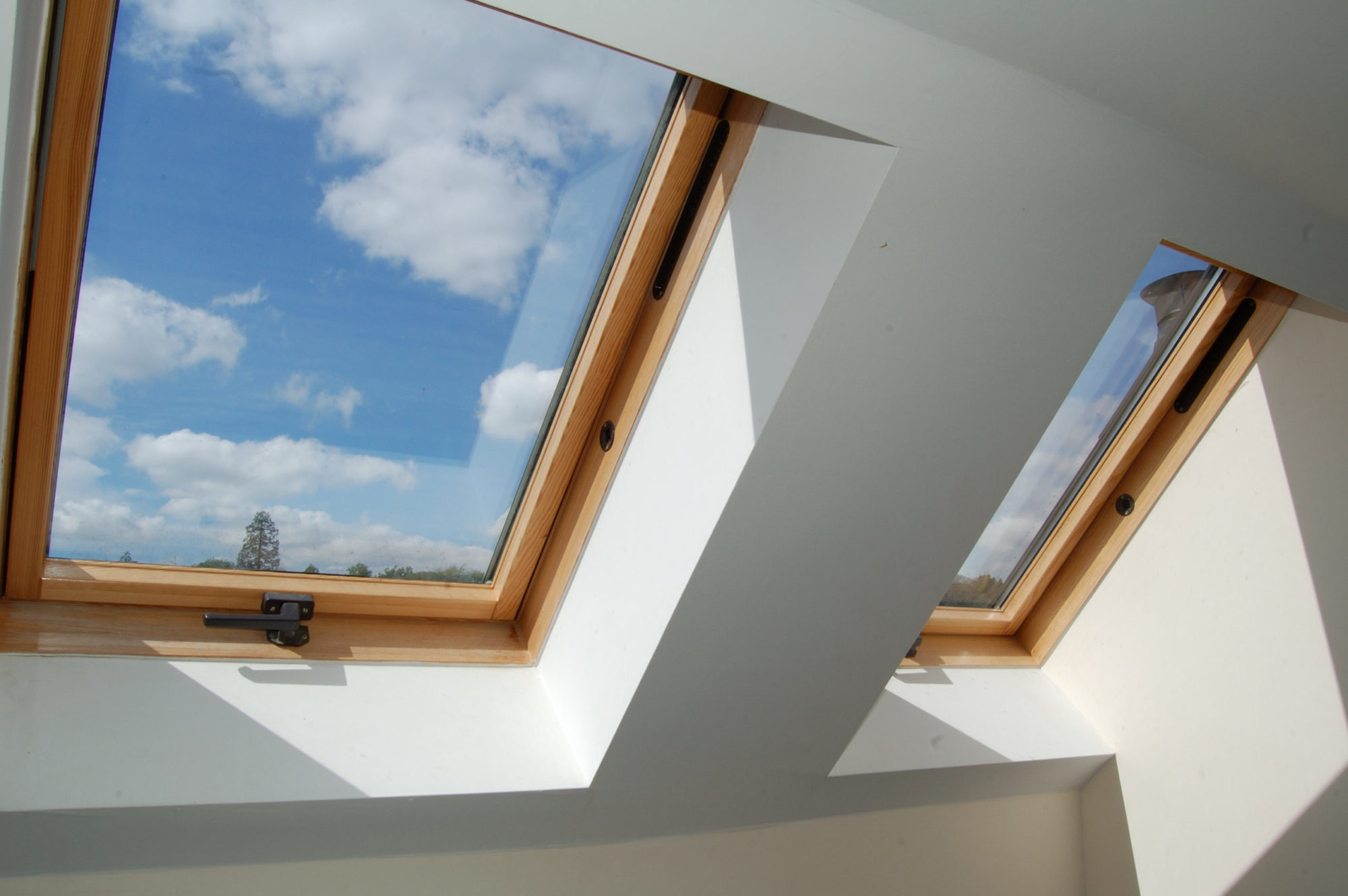
Skylights
Roof windows, known as skylights, have become increasingly popular as homeowners and designers seek to better utilize space in smaller houses by creating more habitable rooms under sloping roofs. They are glazed with glass rather than plastic and are available with most of the glazing and solar control options of standard windows. Operable skylights can be opened manually or by a motorized system. In addition, some manufacturers offer unique venting mechanisms that allow some ventilation airflow without actually opening the window. Operable skylights or vents allow hot air that rises to the ceiling level to be effectively exhausted from the space. Skylights have rotating sashes to allow cleaning of the exterior pane. Most skylights can be equipped with operable interior shading systems to diffuse or reject intense sunlight.
- Flush Mount: A flush mount skylight is placed on the roof deck with no curb. It is overlapped by and sealed to the roofing material.
- Curb Mount: A curb-mounted skylight is placed on a curb raised above the roof plane. This type of curb is not supplied with the skylight. The skylight may be fixed or operable.
- Integral Curb: In this case, the curb is supplied with the skylight as a complete unit. The skylight may also be fixed or operable.
Light Tubes
Light tubes are another method for providing overhead sunlight in a room. A clear plastic dome is mounted on the roof and is connected to a small light diffuser in the ceiling by a highly reflective tube. The tube is relatively small (10–14 inches in diameter) and is bendable making it easy to install in difficult places without reframing the roof and constructing a light well as required with a traditional skylight.
Condensation
Condensation can cause problems in skylights. “Leaky” skylights are often misdiagnosed. What are perceived to be drops of water from a leak are more often drops of water condensing on the cold skylight surfaces. A skylight is usually the first place condensation will occur indicating too much moisture in the interior air. Insulating the skylight well and providing adequate air movement assists in reducing condensation. Also the use of high-insulating glazing with a well designed frame can help to solve condensation problems.
Choosing Skylights for Your Home
- Check the pitch roof and determine what skylight product would work best (deck-mounted, curb-mounted, pan-flashed).
- Determine what type of skylight operation is wanted (electric venting, manual venting, fixed).
- Identify the ceiling and roof style for optimal size and configuration of the skylight shaft (flat ceiling, cathedral ceiling, sloped wall, flat or sloped roof)
- Select the glazing type (high-performance, tempered, laminated, impact, snow load).
- Select screen accessories if wanted (solar blinds, blackout blinds, Venetian blinds, roller shades).
- Select manual or electric controls to operate operable skylights and accessories.
Learn more about choosing the right type of skylight for your home in this article from Porch.